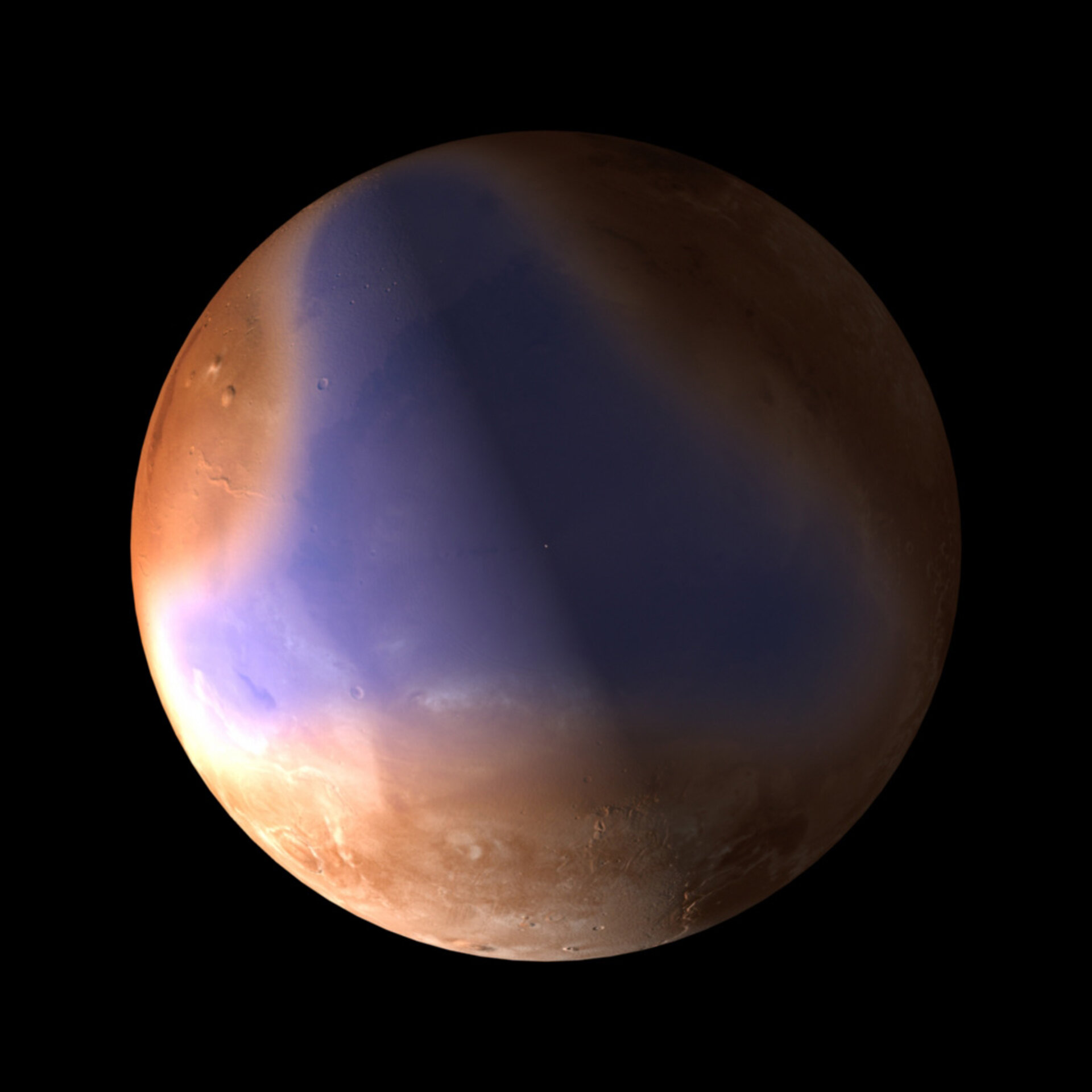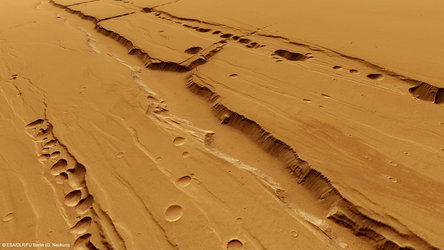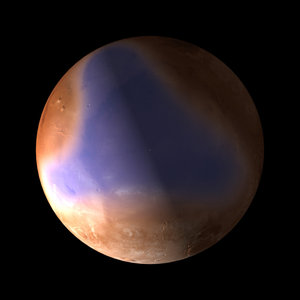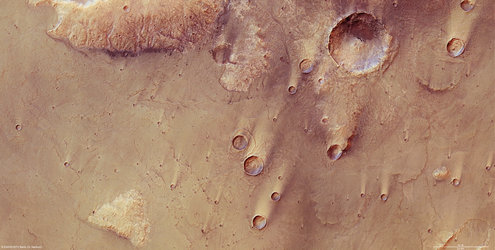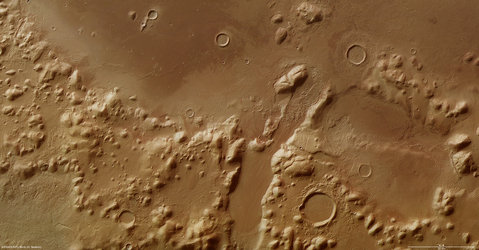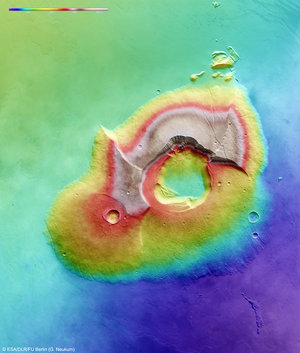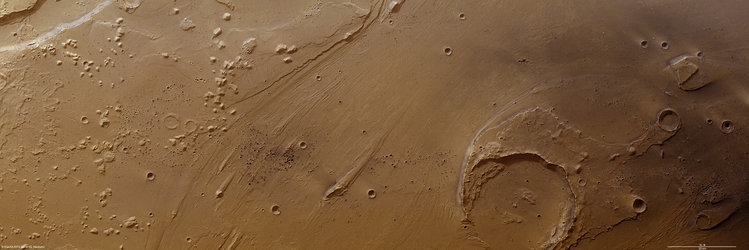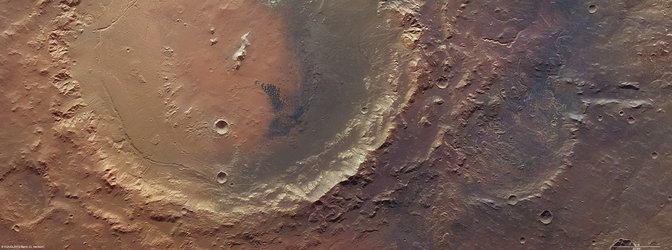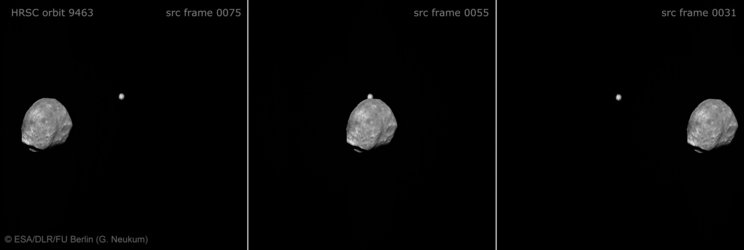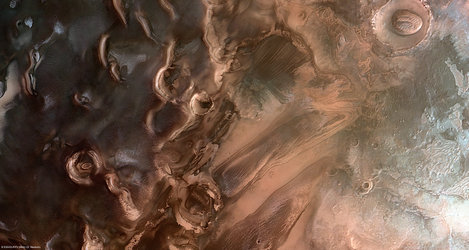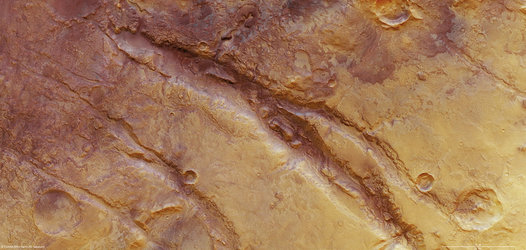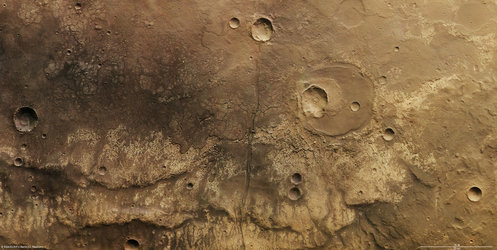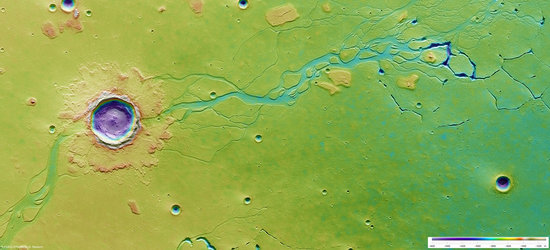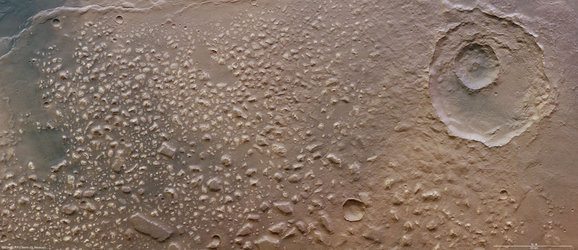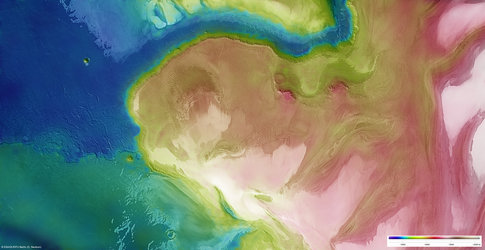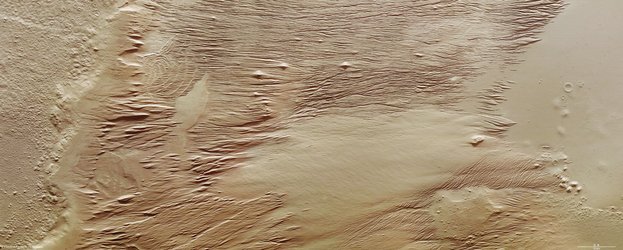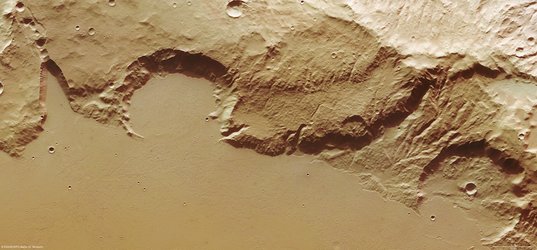ESA's Mars Express radar gives strong evidence for former Mars ocean
ESA's Mars Express has returned strong evidence for an ocean once covering part of Mars. Using radar, it has detected sediments reminiscent of an ocean floor within the boundaries of previously identified, ancient shorelines on Mars.
The MARSIS radar was deployed in 2005 and has been collecting data ever since. Jérémie Mouginot, Institut de Planétologie et d'Astrophysique de Grenoble (IPAG) and the University of California, Irvine, and colleagues have analysed more than two years of data and found that the northern plains are covered in low-density material.
"We interpret these as sedimentary deposits, maybe ice-rich," says Dr Mouginot. "It is a strong new indication that there was once an ocean here."
The existence of oceans on ancient Mars has been suspected before and features reminiscent of shorelines have been tentatively identified in images from various spacecraft. But it remains a controversial issue.
Two oceans have been proposed: 4 billion years ago, when warmer conditions prevailed, and also 3 billion years ago when subsurface ice melted, possibly as a result of enhanced geothermal activity, creating outflow channels that drained the water into areas of low elevation.

"MARSIS penetrates deep into the ground, revealing the first 60–80 metres of the planet's subsurface," says Wlodek Kofman, leader of the radar team at IPAG.
"Throughout all of this depth, we see the evidence for sedimentary material and ice."
The sediments revealed by MARSIS are areas of low radar reflectivity. Such sediments are typically low-density granular materials that have been eroded away by water and carried to their final destination.
This later ocean would however have been temporary. Within a million years or less, Dr Mouginot estimates, the water would have either frozen back in place and been preserved underground again, or turned into vapour and lifted gradually into the atmosphere.
"I don't think it could have stayed as an ocean long enough for life to form."
In order to find evidence of life, astrobiologists will have to look even further back in Mars' history when liquid water existed for much longer periods.
Nevertheless, this work provides some of the best evidence yet that there were once large bodies of liquid water on Mars and is further proof of the role of liquid water in the martian geological history.
"Previous Mars Express results about water on Mars came from the study of images and mineralogical data, as well as atmospheric measurements. Now we have the view from the subsurface radar," says Olivier Witasse, ESA's Mars Express Project Scientist.
"This adds new pieces of information to the puzzle but the question remains: where did all the water go?"
Mars Express continues its investigation.















 Germany
Germany
 Austria
Austria
 Belgium
Belgium
 Denmark
Denmark
 Spain
Spain
 Estonia
Estonia
 Finland
Finland
 France
France
 Greece
Greece
 Hungary
Hungary
 Ireland
Ireland
 Italy
Italy
 Luxembourg
Luxembourg
 Norway
Norway
 The Netherlands
The Netherlands
 Poland
Poland
 Portugal
Portugal
 Czechia
Czechia
 Romania
Romania
 United Kingdom
United Kingdom
 Slovenia
Slovenia
 Sweden
Sweden
 Switzerland
Switzerland

























